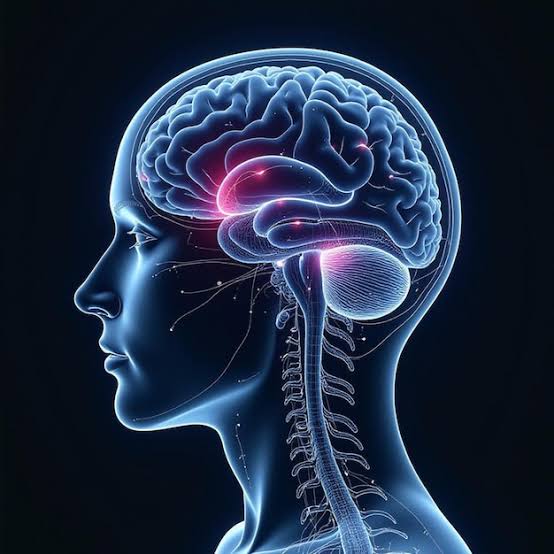It begins in a look, a word, a gesture. Trust is that invisible bridge stretching between people, suspended above the unknown. You can’t touch it, but you feel it. It governs every corner of your life—relationships, business, politics, medicine, and even your connection to yourself. Yet it’s astonishingly fragile. One betrayal can shatter it. One broken promise can leave it in ruins.
But why?
Why is trust so difficult to build, and why does it collapse so quickly? Why do we sometimes give it too freely, and other times hold it tightly, afraid to let it go? To understand trust is to understand one of the most fundamental forces of human psychology—one that has shaped our species for millennia.
In the Beginning, There Was Survival
Long before trust was a concept with legal contracts and therapy sessions, it was a matter of life and death. Imagine early humans roaming in small bands, facing predators, hunger, and unknown threats. You couldn’t survive alone. You needed others—to watch your back, to share food, to help with your children. But there was always risk. What if someone lied? What if they stole your share or led you into danger?
Trust, in this raw world, became the ultimate shortcut. It allowed humans to cooperate, even when full certainty was impossible. You couldn’t read someone’s mind, but you could read their face, their voice, their track record. And if you could trust them—even a little—you could take that leap toward collaboration.
Evolution favored trust—but not blind trust. The brain evolved to be exquisitely sensitive to betrayal. Better to be safe than sorry. Better to withdraw and protect than to be exploited twice.
These instincts live in us still.
The Brain’s Trust Machinery
Modern neuroscience reveals that trust is not just an idea—it’s a physical process. Deep in your brain, regions like the amygdala, the prefrontal cortex, and the striatum work together to evaluate trustworthiness. These areas are involved in risk detection, empathy, prediction, and reward.
One molecule plays a starring role: oxytocin, often nicknamed the “trust hormone.” Oxytocin levels rise when we hug, hold hands, or even engage in kind conversation. It enhances feelings of closeness and makes us more likely to trust others—though not blindly. Oxytocin amplifies our sense of “us” versus “them.” It makes us more trusting of those in our group, but sometimes more wary of outsiders.
In experiments, people given synthetic oxytocin were more likely to trust others with money in games—even when there was a risk of being cheated. But the effect didn’t last after betrayal. Once someone broke trust, oxytocin couldn’t repair it.
Your brain is designed to open doors cautiously—and slam them shut swiftly when threatened.
The Slow Climb of Trust-Building
Building trust is like growing a tree. You plant it in uncertain soil, water it with honesty, nourish it with consistency. Over time, roots form. The deeper the roots, the harder it is to shake.
Psychologists describe trust as having three main components: competence, honesty, and benevolence.
Competence means believing someone has the ability to do what they say. Honesty is the belief they will tell the truth. Benevolence is the belief they care about your well-being.
All three are essential. You might believe your doctor is competent, but if you catch her lying, the trust dies. You might know your friend loves you, but if he’s constantly unreliable, the tree won’t grow.
Trust accumulates in small moments: keeping a secret, showing up on time, listening without judgment, apologizing sincerely. It’s not the grand gestures that cement trust—it’s the thousand quiet choices that say, “You matter, and I won’t let you down.”
The Heartbreak of Betrayal
And then, in a blink, trust can break.
It happens in personal relationships—a lie discovered, an affair exposed. It happens in workplaces—promises not kept, credit stolen. It happens in governments and institutions—scandals, deception, corruption. In that moment, the brain recoils. Emotionally, betrayal registers as a wound. Neurologically, it activates the same brain regions as physical pain.
Why does it hurt so much?
Because trust is vulnerability. When you trust someone, you hand them a piece of your safety. When they betray you, they don’t just break a rule—they shatter a sacred exchange. The pain is existential: “I thought I knew you. I thought I was safe. I was wrong.”
The depth of the wound often reflects the depth of the trust.
And rebuilding is hard. Studies show that people require far more consistent, positive experiences to rebuild trust than they needed to build it in the first place. It’s like breaking a vase. You can glue it back together, but the cracks remain.
Children, Attachment, and the First Trust Lessons
Long before we can speak, we are learning about trust.
Attachment theory, pioneered by psychologist John Bowlby, shows that our earliest relationships—especially with caregivers—shape our internal models of trust. When a baby cries and a parent comes, trust begins. The infant learns: “I am heard. I am held. The world is safe.”
But when caregivers are inconsistent, neglectful, or frightening, children adapt in other ways. They might become anxious, always needing reassurance. Or avoidant, protecting themselves by shutting down emotionally. These patterns often follow us into adulthood, coloring our romantic relationships, friendships, and even how we trust ourselves.
Yet childhood is not destiny. Human beings are astonishingly capable of change. Through therapy, support, and new experiences, many people rewrite their trust scripts.
Trust and Society: The Glue of Civilization
Step back and look at society, and you’ll see trust everywhere. It’s why you eat food from a stranger’s hands at a restaurant. Why you board a plane and believe the pilot knows what she’s doing. Why you invest money in a company or swipe right on a dating app.
Without trust, systems collapse.
Sociologists call this social trust, and it predicts everything from economic growth to public health. Countries with higher levels of trust tend to have stronger democracies, better education systems, and more resilience during crises.
But once social trust erodes—through injustice, inequality, or misinformation—it’s hard to regain. People retreat into suspicion. Conspiracy theories thrive. Cooperation falters.
Rebuilding collective trust requires transparency, accountability, and truth. It requires leaders who not only promise, but deliver.
And it requires everyday people who model trustworthiness in small but powerful ways.
The Double-Edged Sword of Technology
In our digital age, trust has taken on new dimensions. You form bonds with people you’ve never met. You follow influencers, buy products with a single click, and share personal data with algorithms.
But behind the screen, it’s harder to detect deception. We trust user reviews, likes, and curated profiles—often forgetting how easily these can be manipulated. Fake news spreads faster than the truth. Bots pretend to be people. Deepfakes blur reality.
Trust is being tested like never before.
And yet, technology also allows for greater transparency. You can research a company’s values. You can fact-check in real time. You can hold institutions accountable in ways previous generations couldn’t imagine.
The future of trust may depend on how we design and use these tools. Will algorithms reward honesty or clickbait? Will platforms prioritize safety or profit? Will we learn to discern digital signals of trust as keenly as we once read a face in a fire-lit cave?
Rebuilding Trust: A Psychological Blueprint
So, when trust is broken—personally or publicly—how do we rebuild?
Psychologists and conflict resolution experts point to key ingredients.
First, there must be acknowledgment. Not denial. Not minimization. A sincere, unflinching recognition of harm.
Second, empathy. The one who broke trust must step into the shoes of the hurt party and feel their pain—not to wallow, but to connect.
Third, accountability. This means actions, not just words. Making amends. Changing behavior. Demonstrating consistency over time.
Fourth, patience. Rebuilding trust takes time. There are no shortcuts.
And finally, reciprocity. The injured party must eventually be willing to risk again. Not foolishly, but courageously.
Trust, in its healthiest form, is a mutual act of bravery.
Trusting Yourself: The Forgotten Frontier
Amid all this talk of trusting others, we forget the most foundational trust of all: self-trust.
Can you believe your own instincts? Can you keep your own promises? Can you forgive your own failures and try again?
Self-trust is not arrogance. It’s not ego. It’s the quiet knowing: “I can handle what comes. I will show up for myself.”
Trauma, criticism, and chronic self-doubt can erode this trust. But like any relationship, it can be rebuilt. Through integrity, compassion, and small wins.
When you trust yourself, you become a steadier force in a chaotic world. You choose relationships from strength, not fear. You speak up. You walk away. You rest when needed.
You stop outsourcing your worth.
Why Trust Is Worth the Risk
Yes, trust can be broken. Yes, it hurts. But the alternative—living without trust—is lonelier. Colder. More fearful.
Trust is what allows you to fall in love. To raise children. To start a business. To make art. To ask for help.
It’s what gives life richness and depth. Not because it’s perfect, but because it’s brave.
To trust is to say: I believe there is goodness here. I believe you won’t harm me. I believe we can build something real.
And even if it fails, I believe I can survive.
That is strength. That is hope. That is humanity.





